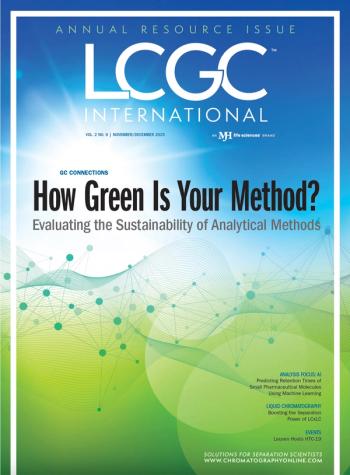
- The Column-05-02-2012
- Volume 8
- Issue 8
DNA damage
A group of researchers in the USA has carried out an investigation using both gas chromatography-mass spectrometry (GC?MS) and inductively coupled plasma mass spectrometry (ICP?MS) to reveal that engineered nanoparticles can accumulate within plants and damage their DNA.
A group of researchers in the USA has carried out an investigation using both gas chromatography-mass spectrometry (GC–MS) and inductively coupled plasma mass spectrometry (ICP–MS) to reveal that engineered nanoparticles can accumulate within plants and damage their DNA.1 These engineered nanoparticles are found in many commercial products and are often released into the environment. In the past it has been shown that metal‑based nanomaterials act as mediators of DNA damage in mammalian cells and organisms, but for the first time copper oxide nanoparticles have been revealed to induce DNA damage in agricultural and grassland plants.
The tests were performed on radish (Raphanus sativus), perennial ryegrass (Lolium perenne) and annual ryegrass (Lolium rigidum). GC–MS detected base lesions and ICP–MS measured copper uptake. There was significant accumulation of oxidatively modified, mutagenic DNA lesions and plant growth inhibition was observed. The lesion levels were measured in tandem to clarify the mechanisms of DNA damage.
The group concluded that they had produced the first evidence of multiple DNA lesion formation in plants and that this provided the basis for further research.
1. Bryant C. Nelson et al.,
Environmental Science and Technology
,
46
(3), 1819–1827 (2012).
Articles in this issue
over 13 years ago
Cancer identificationover 13 years ago
Cave markingsover 13 years ago
Market Profile: Supercritical Fluid Chromatographyover 13 years ago
Curbing Food Contamination Crisesover 13 years ago
Seafood bacteriaNewsletter
Join the global community of analytical scientists who trust LCGC for insights on the latest techniques, trends, and expert solutions in chromatography.



